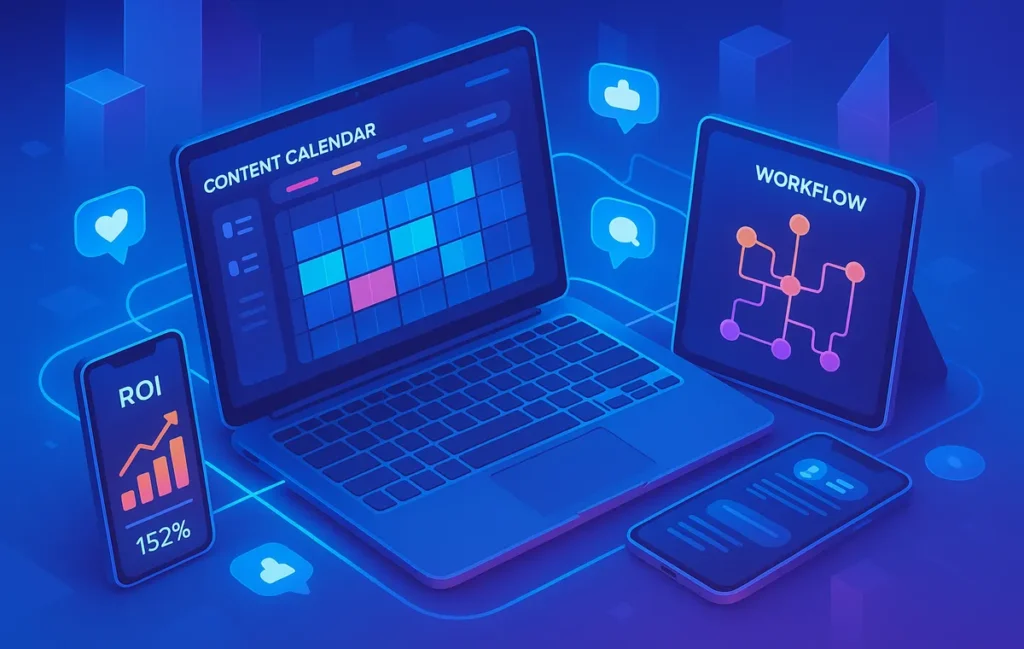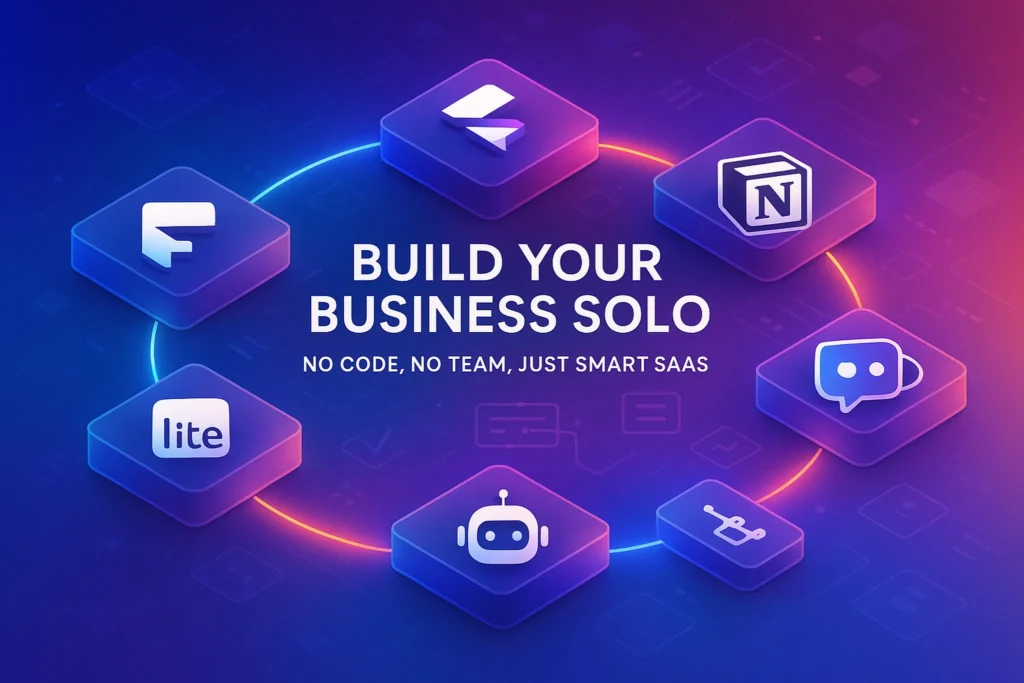📈 Why Content Marketing Software Is Critical in 2025
Content marketing has evolved from being a creative experiment into the backbone of digital growth. By 2025, most organizations—whether small startups or global enterprises—can’t rely on spreadsheets and scattered workflows to keep up with demand. The volume of content, the need for data-driven decisions, and the pressure to justify ROI all demand a dedicated technology stack.
Content marketing software solves this challenge by creating scalable workflows. It’s not just about writing blog posts faster; it’s about connecting strategy, production, collaboration, publishing, and analytics into one system. Teams that embrace these platforms report up to 40% higher productivity and significantly reduced campaign bottlenecks.
At NerdChips, we’ve seen one universal truth: companies that invest in content marketing software early scale smoother and fail less often. Those that delay often drown in inefficiency before they even measure ROI.
💡 Nerd Tip: Don’t just think “tools.” Think of content software as an extension of your team’s process and culture.
🏗️ Scalability & Workflow Management
Scalability isn’t just about producing more content—it’s about doing so without losing quality or alignment. Modern content marketing software introduces role-based permissions, task automation, and editorial workflows that keep teams synced even across time zones.
For small teams, this means one marketer can handle planning, creation, and publishing without chaos. For larger organizations, scalability means dozens of writers, designers, and strategists can collaborate on hundreds of assets without stepping on each other’s toes.
Platforms like advanced content marketing platforms now integrate AI writing assistants, automation engines, and analytics dashboards. This allows a brand to go from idea to multi-channel distribution in days instead of weeks. If you’ve explored our article on How to Automate Content Planning with AI Tools, you already know how automation reduces workload while preserving creativity.
🧩 SMB vs. Enterprise: Different Needs, Different Tools
A small business doesn’t need the same toolkit as a Fortune 500 company. SMBs benefit from lighter tools with intuitive UIs, bundled features, and affordable pricing. Many SMB marketers rely on hybrid solutions that combine planning, creation, and distribution into one—saving cost and avoiding steep learning curves.
Enterprises, on the other hand, prioritize integration depth and compliance. They need software that connects with CRMs, marketing automation suites, and BI tools. They also require granular governance, version control, and advanced analytics. For them, the upfront cost is justified by risk reduction and the ability to scale campaigns across dozens of markets simultaneously.
💡 Nerd Tip: Always match software complexity to your team’s maturity. Overbuying enterprise software for a 5-person team often kills productivity instead of helping it.
💵 Costs, Learning Curves & Support Considerations
While features dominate discussions, practical factors like costs and support often decide adoption success. SMB-friendly platforms typically start at $15–$50 per user per month, while enterprise-grade systems can cost hundreds per seat. Costs also include training time: a simple UI saves hours, while complex tools require weeks of onboarding.
Support is equally crucial. A platform with 24/7 live support or a dedicated success manager may justify higher pricing for organizations that can’t afford downtime. Frequent software updates are another overlooked factor—platforms that evolve regularly stay aligned with algorithm shifts and new publishing channels.
💡 Nerd Tip: Treat software as a partnership. Ask vendors about update frequency, support responsiveness, and training resources before signing contracts.
🔗 Integrations: The Glue That Holds Everything Together
No content tool operates in a vacuum. Integrations are what transform a platform into a growth engine. In 2025, leading tools integrate seamlessly with automation platforms, CRMs, email marketing systems, and even analytics suites like GA4.
For SMBs, integrations ensure smooth publishing across WordPress, Shopify, or social media channels without copy-pasting. For enterprises, APIs and native connectors allow data to flow between content platforms, sales CRMs, and performance dashboards.
Consider this: a marketing director running campaigns across multiple channels can instantly push approved blog posts into email workflows using top automation tools for marketers. Without integrations, these steps would require manual updates, leading to delays and errors.
📊 Analytics & ROI Tracking
Scalability without measurement is a recipe for wasted budget. The best content marketing software includes native analytics that track content performance across the funnel—from impressions to conversions.
Some platforms now offer AI-driven insights, predicting which content formats drive the highest ROI. Benchmarks show companies using predictive analytics achieve 15–18% higher engagement than those relying solely on post-campaign reporting. For enterprises, this kind of foresight shapes budgets and long-term strategy.
A content manager on X recently wrote:
“We switched to a predictive content platform—traffic jumped 22%, but the real win was knowing what not to produce. Saved us months of wasted effort.”
💡 Nerd Tip: Don’t measure content by vanity metrics like pageviews alone. Tie performance to lead quality, conversions, or revenue impact.
🚀 Looking to Scale Smarter?
Content marketing software isn’t just about speed—it’s about alignment, analytics, and ROI. The right platform can future-proof your content strategy.
📂 Key Factors for Choosing the Right Software
When evaluating platforms, consider these pillars:
-
Scalability: Can the tool handle 10x more content without collapsing workflows?
-
Integration depth: Does it connect with your CRM, automation, and analytics stack?
-
Support & training: Will your team adapt quickly, or drown in complexity?
-
Analytics: Does it track ROI or just surface vanity metrics?
-
Cost-to-value ratio: Are you paying for features you’ll actually use?
Each factor ties back to your organizational size and goals. As our guide to Content Calendar Tools shows, even simple scheduling software can transform small teams, while enterprises need analytics-heavy platforms to justify multimillion-dollar budgets.
📝 Case Studies: Real-World Scenarios of Impact
To understand how content marketing software transforms operations, nothing beats real-world examples. A small e-commerce startup in Europe adopted a lightweight content platform with AI-assisted planning. Within six months, they reported a 30% increase in team output, simply because repetitive tasks like calendar scheduling and content approvals were automated. The founder shared publicly:
“We didn’t hire extra staff. The tool became our operations manager. Without it, we’d have burned out.”
On the enterprise side, a Fortune 500 tech company integrated a full content marketing suite with its Salesforce CRM. The result? Sales teams could see exactly which content pieces influenced leads in the pipeline. Within one year, the company measured a 2x improvement in ROI attribution, allowing them to cut underperforming formats and double down on content that moved revenue.
💡 Nerd Tip: When evaluating tools, ask for case studies from businesses like yours. SMBs and enterprises see very different outcomes.
⚠️ Risk Management in Content Marketing Software
Scaling with software introduces risks that every team must address. One of the biggest is vendor lock-in. Once your content lives in a proprietary system, migrating out can become costly and disruptive. Another risk is hidden costs—add-ons, user seats, or API call limits can balloon expenses, catching teams off guard.
For enterprises, data security and compliance are critical. GDPR, HIPAA, and regional data protection laws mean software must meet strict requirements. Choosing a non-compliant vendor could expose organizations to legal and reputational risks. Even SMBs need to consider whether their content platforms handle sensitive customer data responsibly.
💡 Nerd Tip: Always calculate total cost of ownership (TCO). Don’t just look at monthly fees—include training, add-ons, integrations, and exit costs.
🔗 Integration Depth: What It Looks Like in Practice
Integrations aren’t a nice-to-have; they’re the multiplier that makes software indispensable. For example, an SMB might connect its content platform to WordPress and use Zapier to auto-publish posts, sync with Google Drive assets, and trigger Slack notifications. This saves hours of manual handoffs.
Enterprises, on the other hand, use deeper integrations. A global brand linking its content marketing suite with HubSpot or Salesforce CRM can push lead intelligence directly into the sales pipeline. This closes the loop between marketing and sales, ensuring content isn’t just produced but actively drives revenue.
💡 Nerd Tip: Before buying, map your stack. Check if the platform has native integrations or if you’ll need middleware like Zapier. Gaps in integration often mean hidden costs later.
👥 Team Adoption & Change Management
The best software can fail if teams resist adoption. Research shows that nearly 35% of software implementations underperform because employees never fully embrace the tool. For content marketing platforms, this often happens when training is rushed, or leadership assumes the team will “figure it out.”
Successful adoption requires intentional change management: onboarding sessions, internal champions who advocate for the tool, and ongoing feedback loops. For creative teams, aligning workflows with software takes time. But when teams buy in, productivity spikes—because friction is replaced with clarity.
💡 Nerd Tip: Don’t roll out software overnight. Pilot with a small group, gather feedback, then expand to the wider team. This reduces resistance and accelerates adoption.
🔮 The Future of Content Marketing Software
Looking ahead, the next wave of content marketing platforms will be AI-first. Instead of waiting for humans to fill calendars, these platforms will propose weekly plans, draft outlines, and even recommend distribution timing based on predictive analytics. Already, some AI-powered tools claim 15–20% gains in ROI by suggesting campaigns likely to outperform based on historical data.
Another frontier is real-time analytics. Rather than reviewing reports weekly, marketers will get live performance dashboards that adjust campaigns instantly. Integration with sales systems will also deepen—content will no longer be just a marketing function but part of the entire revenue engine.
Some analysts predict AI agents embedded in platforms, capable of autonomously running A/B tests, repurposing content for multiple channels, and flagging compliance issues. For both SMBs and enterprises, the message is clear: the line between content creation, strategy, and execution will blur into a single intelligent workflow.
💡 Nerd Tip: Choose platforms that show signs of innovation. Vendors who invest in AI and predictive analytics today will be the leaders of tomorrow.
📬 Want More Smart Content Tips?
Join NerdChips’ newsletter and get weekly deep dives on content tools, automation, and AI strategies—designed for creators, teams, and enterprises scaling smarter.
🔐 100% privacy. Only insights that boost your ROI.
🧠 Nerd Verdict
In 2025, the best content marketing software doesn’t just speed up publishing—it future-proofs entire organizations. For SMBs, lightweight, affordable tools offer outsized impact by aligning strategy and execution. For enterprises, robust platforms deliver governance, integrations, and analytics powerful enough to justify large-scale budgets.
Scalability, analytics, and integrations are no longer optional—they are survival tools. At NerdChips, our stance is simple: the winners of tomorrow will be the teams who adopt platforms not just to create more content, but to create smarter, better-aligned, ROI-driven content.
❓ FAQ: Nerds Ask, We Answer
💬 Would You Bite?
If you had to choose today, would you go for a lightweight tool to keep costs down or an enterprise platform to future-proof your strategy?
Share your thoughts—we want to hear how you scale. 👇
Crafted by NerdChips for marketers and teams who believe in scaling content the smart way.



